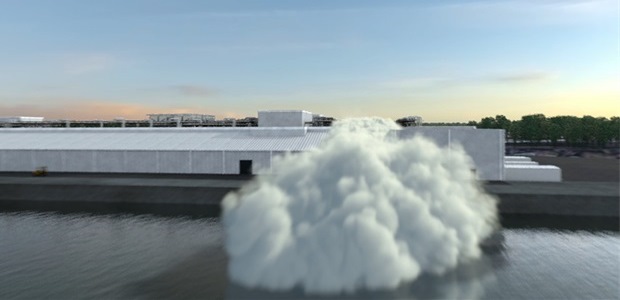
New CSB Video Explains Hydraulic Shock Incident
It illustrates what happened Aug. 23, 2010, when 32,000 pounds of anhydrous ammonia leaked at a Millard Refrigerated Services Inc. facility. Thirty-two contract workers off site were hospitalized after exposure to the cloud.
A new video from the U.S. Chemical Safety Board explains how 32,000 pounds of anhydrous ammonia leaked at a Millard Refrigerated Services Inc. facility on Aug. 23, 2010, an accident that caused more than 150 off-site workers to be exposed to the toxic gas cloud. Thirty-two of them were hospitalized, including four in an intensive care unit. The seven-minute video is titled "Shock to the System" and includes a detailed 3D animation of the events that led up the ammonia release; it is based on CSB's related safety bulletin, "Key Lessons for Preventing Hydraulic Shock in Industrial Refrigeration Systems."
Chairperson Rafael Moure-Eraso said the video "is a valuable tool intended for use at the large number of facilities that utilize anhydrous ammonia. The key lessons learned from our investigation, examined in our report and in this video, can help facilities prevent a similar accident from occurring due to hydraulic shock."
The CSB investigation found that the day before the leak, the Millard facility lost power for more than seven hours. During that time, the refrigeration system was shut down. The system regained power Aug. 23 "and was up and running, though operators reported certain problems. While doing some troubleshooting an operator cleared alarms in the control system, which reset the refrigeration cycle on a group of freezer evaporators that were in the process of defrosting. This resulted in both hot, high-pressure gas and extremely low temperature liquid ammonia to be present in the coils and associated piping at the same time. This caused the hot high-pressure ammonia gas to rapidly condense into a liquid. Because liquid ammonia takes up less volume than ammonia gas – a vacuum was created where the gas had condensed," according to the agency's release. "The sudden pressure drop sent a wave of liquid ammonia through the piping, causing a sudden pressure surge known as 'hydraulic shock.' This abnormal transient condition results in a sharp pressure rise with the potential to cause catastrophic failure of piping, valves, and other components."
The video shows how the pressure surge ruptured the evaporator piping manifold inside one of the freezers, causing a 12-inch suction pipe on the roof of the facility to catastrophically fail. One Millard employee was hurt when he fell while attempting to escape from a crane after it became engulfed in the resulting ammonia cloud. The cloud traveled a quarter mile south from the facility toward an area where 800 contractors were working outdoors at a cleanup site for the Deepwater Horizon oil spill. CSB said 152 of those workers and ship crew members reported symptomatic illnesses from ammonia exposure.
Key lessons from the investigation are avoiding manual interruption of evaporators in defrost and requiring control systems to be equipped with password protection to ensure only trained, authorized personnel have the authority to manually override systems. On the day of the incident, the control system did not recognize that the evaporator was already in the process of defrosting and allowed an operator to manually restart the refrigeration cycle without removing hot ammonia gas from the evaporator coil. Another lesson is that an emergency shutdown should be activated in the event of an ammonia release if a leak cannot be promptly isolated and controlled.